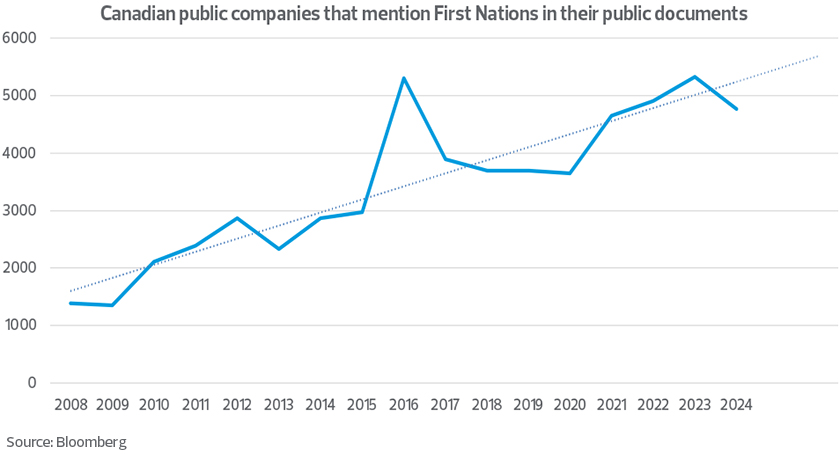As Canada faces a critical housing shortage, First Nations are emerging as transformative leaders in the real estate sector by leveraging self-governance and cultural values to drive groundbreaking projects.
Initiatives like the Squamish Nation’s Sen̓áḵw Development in Metro Vancouver stand as a testament to how partnerships with First Nations are a viable option for the sector to address housing shortages, promote sustainability and redefine urban living.
This project, led by the Squamish Nation’s Nch’ḵay̓ Development Corp. in collaboration with Westbank Projects Corp., is the largest First Nations-led real estate initiative in Canadian history and provides tangible benefits for investors, policymakers and prospective residents.
The development also offers a pathway to long-term economic security for the First Nation while ensuring cultural preservation.
With growing government support and heightened public awareness, initiatives like the Sen̓áḵw Development represent a shift toward inclusive and forward-thinking community planning. Here are some of the key takeaways from a recent tour of this project.
A case study in collaboration
The Sen̓áḵw Development is tackling Metro Vancouver’s housing crisis with 6,000 rental units, including 1,200 designated as affordable housing. While the monthly rates for these units have yet to be announced, affordable housing is housing that costs less than 30 per cent of a household’s before-tax income, according to the Canada Mortgage and Housing Corporation (CMHC).
Notably, 250 of these units are reserved for Squamish Nation members, ensuring direct benefits for the First Nation. The initiative is supported by Hiy̓ám̓ Housing, a non-profit housing organization founded by the Squamish Nation Council, and integrates cultural values throughout its design and operations.
Key highlights of the Sen̓áḵw project include:
- Cultural integration: Squamish traditions are deeply woven into the project, with Coast Salish art and culturally significant landscaping creating a unique urban experience.
- Workforce inclusion: First Nations workers make up 40 per cent of the trades on-site, exemplifying a community-first approach to employment. A study commission by King’s Trust Canada noted that equalizing employment rates between Indigenous peoples and other Canadians could generate nearly $7 billion in additional annual employment income, underlining the transformative potential of initiatives like this.
- Long-term economic security: Leasing revenues, secured through 100-year contracts, promise financial sustainability for the Squamish Nation.
Why developers are betting big on First Nations partnerships
Equitable partnerships with First Nations are growing in appeal as one of the means to address bureaucratic delays in the real estate sector.
Restrictive zoning laws, protracted approval timelines and outdated land-use restrictions continue to bottleneck housing projects, while developers face an average wait of 249 days for building permits—nearly triple the U.S. time frame.
Working collaboratively with First Nations, which have self-governing authority over their lands, offers a solution. Projects like the Sen̓áḵw Development bypass municipal hurdles entirely, operating outside the city of Vancouver’s standard approval processes.
This leads to accelerated timelines and reduced costs so a bold, large-scale development like this one can proceed without delay while also providing direct benefits to the Squamish Nation.
The federal government is doubling down on its support for Indigenous-led initiatives, dedicating over $5 billion in recent budgets to these housing and sustainability programs. By tapping into federal tools like the Indigenous Equity Initiative and CMHC loans, these developments are expanding on commercial programs and making them available for on-reserve market housing development.
A steady rise in the number of mentions of First Nations in public documents from Canadian public companies suggests a growing awareness of the benefits of partnering with these communities.
The Sen̓áḵw Development offers a road map for aligning economic progress with cultural preservation, demonstrating how First Nations leadership can unlock new pathways toward sustainable growth.



